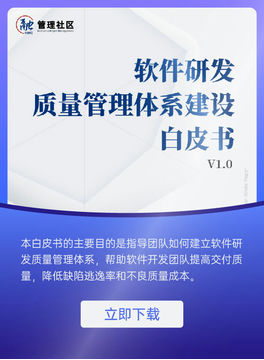Agile sprints and iterations, along with the concept of time boxing, are fundamental aspects of Agile project management. These elements work in harmony to bring structure, predictability, and flexibility to software development and other projects. Time boxing, in particular, is a crucial yet somewhat mysterious concept that can be the difference between a successful Agile implementation and a chaotic one.
At its core, time boxing sets a fixed duration for a particular task or set of tasks within an Agile sprint or iteration. This means that instead of allowing a task to drag on indefinitely, there is a clear end point. This simple yet powerful concept has far - reaching implications for how teams work, how they manage resources, and how they deliver value to stakeholders.
Understanding the mystery of time boxing is essential for any Agile practitioner. It requires delving into not only the mechanics of setting time boxes but also the cultural and behavioral aspects that come into play when working within these time - constrained environments. By unlocking the secrets of time boxing, teams can enhance their productivity, improve the quality of their work, and ultimately achieve better project outcomes.
The Concept of Time Boxing in Agile
Time boxing in Agile is a practice that assigns a specific, limited time period to a task or a set of tasks. This time limit is known as the time box. For example, in a two - week sprint, each user story or task within that sprint is given a defined amount of time to be completed. This could be a few hours for a simple task or a day or two for a more complex one.
The purpose of time boxing is multi - fold. Firstly, it creates a sense of urgency. When team members know that they have a limited amount of time to complete a task, they are more likely to focus and prioritize their work effectively. This urgency can prevent the common pitfall of tasks stretching out over an extended period due to procrastination or lack of clear deadlines.
Secondly, time boxing helps in resource management. By setting time limits for tasks, teams can better allocate their resources, such as developers' time, testing resources, and any other necessary assets. It allows for a more accurate assessment of how much work can be accomplished within a given time frame, which in turn aids in planning future sprints and iterations.
Finally, time boxing provides a clear metric for progress. At the end of the time box, it is easy to determine whether a task has been completed or not. This transparency is crucial for Agile teams as it enables them to quickly identify any bottlenecks or issues that may be preventing progress and take corrective action.
Benefits of Time Boxing in Agile Sprints and Iterations
One of the significant benefits of time boxing in Agile sprints and iterations is improved focus. When a time box is set for a task, team members can zero in on the specific goals and requirements of that task. Without the distraction of open - ended timelines, they can channel their energy and creativity towards achieving the desired outcome.
For instance, in a software development project, if a developer has a time box of three days to implement a particular feature, they will be more likely to stay focused on coding, testing, and debugging that feature within that period. This focused effort often leads to higher - quality work as the developer is not pulled in multiple directions by other tasks or distractions.
Another benefit is enhanced predictability. Time boxing allows teams to estimate how much work can be completed in a given sprint or iteration. By consistently setting and adhering to time boxes, teams can build a track record of what they can achieve within specific time periods. This predictability is invaluable for stakeholders, as they can have a better understanding of when certain features or deliverables will be ready.
For example, a product owner can use the historical data of time - boxed tasks within sprints to plan product releases more accurately. They can communicate to the market and customers with more confidence about the timeline for new features or product updates.
Finally, time boxing promotes continuous improvement. At the end of each time box, teams can review their performance. They can analyze whether they met the time box, what went well, and what could be improved. This feedback loop is a cornerstone of Agile methodology, enabling teams to refine their processes, skills, and strategies over time.
Challenges in Implementing Time Boxing

Implementing time boxing in Agile sprints and iterations is not without its challenges. One of the main difficulties is accurately estimating the time required for a task. In complex projects, it can be extremely difficult to predict how long a particular task will take, especially when dealing with new technologies or unforeseen issues.
For example, in a project that involves integrating a new third - party API, there may be unforeseen compatibility issues or performance bottlenecks that were not anticipated during the time - box estimation. This can lead to tasks overrunning their time boxes, disrupting the sprint schedule and potentially causing delays in the overall project.
Another challenge is the cultural shift required within the team. In traditional project management environments, there may be a tendency to have more open - ended timelines and a focus on completing tasks at all costs, regardless of the time taken. Shifting to a time - boxed approach requires a change in mindset, where the team values meeting the time box as much as completing the task.
Some team members may feel pressured by the time constraints, which can lead to stress and a potential drop in the quality of work. It is essential for the team to understand that the goal of time boxing is not to sacrifice quality but to find a balance between delivering value within the given time frame and maintaining high standards.
Finally, external factors can also pose challenges to time boxing. For example, changes in requirements from stakeholders during a sprint can throw off the carefully planned time boxes. If a new requirement is introduced, the team may need to re - evaluate and adjust the time boxes for existing tasks, which can be a complex and time - consuming process.
Strategies for Effective Time Boxing
To overcome the challenges of time boxing, several strategies can be employed. Firstly, accurate task estimation is crucial. Teams should use historical data from past projects to estimate the time required for similar tasks. They can also break down larger tasks into smaller, more manageable sub - tasks and estimate the time for each sub - task separately.
For example, if a team has worked on several similar database migration projects in the past, they can refer to the time taken for those projects to estimate the time for a new database migration task. By breaking the task into sub - tasks such as data extraction, transformation, and loading, they can get a more accurate estimate of the overall time required.
Secondly, building a culture of time - box compliance within the team is essential. This can be achieved through training and communication. Team members should be educated about the benefits of time boxing and how it contributes to the overall success of the project. Regular team meetings can be used to discuss the importance of meeting time boxes and to share best practices.
For instance, the team can have a daily stand - up meeting where members can report on their progress within the time boxes and any issues they are facing. This open communication helps in early identification of problems and allows the team to work together to find solutions.
Finally, having a flexible approach to time boxing is important. While time boxes should be respected, there should also be room for adjustment when necessary. For example, if a task is clearly going to overrun its time box due to unforeseen circumstances, the team can decide to either extend the time box slightly or reprioritize the task and move it to a future sprint. This flexibility ensures that the project can continue to progress smoothly while still maintaining the integrity of the time - boxing concept.
Conclusion
In conclusion, time boxing in Agile sprints and iterations is a powerful concept that offers numerous benefits to project teams. It brings focus, predictability, and a culture of continuous improvement. However, it also presents challenges such as accurate estimation, cultural shifts, and dealing with external factors.
By understanding these challenges and implementing effective strategies, teams can unlock the full potential of time boxing. Accurate task estimation, building a culture of compliance, and maintaining flexibility are key elements in making time boxing work effectively.
When time boxing is implemented correctly, Agile teams can achieve higher productivity, better - quality deliverables, and more satisfied stakeholders. It allows for a more efficient use of resources and enables teams to adapt quickly to changing requirements. As the Agile methodology continues to evolve and be adopted in various industries, a deep understanding of time boxing will be essential for project success. Teams that master the art of time boxing will be better positioned to thrive in the fast - paced and dynamic world of modern project management. By embracing the mystery of the time box and using it to their advantage, Agile teams can create a competitive edge and drive innovation in their projects.
ARTICLE TITLE :Agile sprints and iterations: The mystery of the time box ,AUTHOR :ITpmlib

















